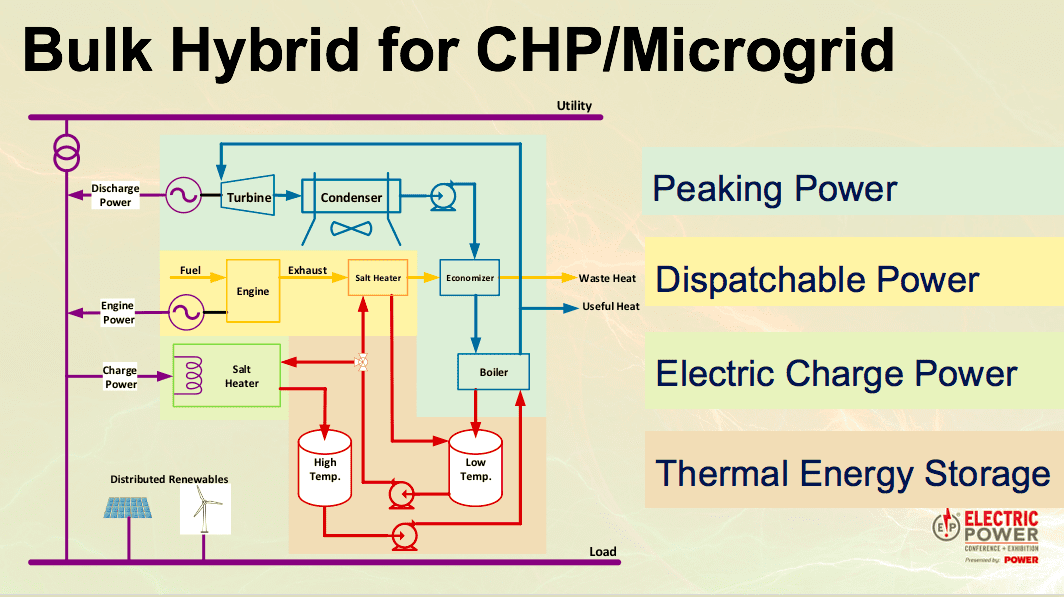Economics Drive Design of DER Systems
The post Economics Drive Design of DER Systems appeared first on POWER Magazine.

Distributed energy systems are transforming the way power is produced and distributed. The decentralized model of power generation, where energy is produced closer to where it will be used, rather than at a large plant elsewhere and sent through the traditional grid, has several advantages, including reducing transmission losses and lowering carbon emissions.
An Oct. 1 session of Experience POWER, supported by POWER magazine, titled Economics of Distributed Energy Systems," brought together a panel of industry executives to discuss the many economic factors that need to be considered when developing a distributed energy project. The session provided an overview of those considerations, beginning with the design of cost-effective distributed generation systems. It also looked at the economics and carbon trade-off of enabling photovoltaic integration with storage, along with systems that integrate renewables with hybrid energy storage.
The panel of industry executives included Peter Lilienthal, CEO of HOMER Energy, and developer of HOMER's hybrid power optimization software. Robert Bouwens, head of sales and aftermarket with Siemens Energy, also participated, sharing his knowledge of project management and business development.
Dennis Elsenbeck, head of energy and sustainability, energy consulting services, with Lytle, gave his insight on energy-related opportunities encompassing a forward view of supply, distribution, and demand. Bill Conlon, the founder of Pintail Power, talked about the successful commercialization of utility-scale distributed energy systems.
Lilienthal presented a sensitivity analysis on the cost of batteries, looking at cost thresholds. Everybody talks about value streams," said Lilienthal. There are a lot of different value streams with storage, they can do a lot of different things. Ideally you would stack those value streams and capture more than one, capture as many as you can, but there's tradeoffs, so they don't just add together, they conflict to some extent with each other. Every application, every site is different."
Future of MicrogridsBouwens talked about the future of microgrids. He noted the spinoff of Siemens Energy from the larger company, noting very big changes" happening in the energy sector around the world.
Obviously, globalization," Bouwens said. Climate change, digitalization, and dramatic changes going on in all the countries of the world. All of that is changing our environment."
Bouwens discussed the rapid increases in energy demand in developing countries, and how microgrid designs can help facilitate better access to electricity to those populations. He discussed Siemens' project at the naval station in Guantanamo Bay in Cuba, noting the five pillars of distributed energy systems: resiliency, flexibility, reliability, decarbonization, and efficiency."
Bouwens said cybersecurity and renewable energy" were key components of the naval station microgrid. We are working basically on a 25-year contract," he said, noting it is a savings contract, where both Siemens and the government benefit."
Solving ProblemsElsenbeck discussed distributed energy systems in the context of What Are We Solving For?" He said the integration of DERs can help solve capacity problems, and power quality problems, and optimize co-location supply and demand."
 Bill Conlon of Pintail Power talked about compressed air energy storage, another bulk hybrid technology for grid integration. Courtesy: Experience POWER
Bill Conlon of Pintail Power talked about compressed air energy storage, another bulk hybrid technology for grid integration. Courtesy: Experience POWERConlon, an expert in hybrid power systems, talked about the use of storage in hybrid systems, including compressed air energy storage.
In this case we typically use an underground cavern, and fill it with compressed air. These [systems] have long life, they're available at large scale, and they have low heat rate," Conlon said. And that low heat rate is an important element because it facilitates the future deployment of hydrogen as a fuel, because hydrogen is expensive, so these might be systems that are well-suited for an economy that is both storing excess renewables ... and consuming hydrogen more cost-effectively."
-Darrell Proctor is associate editor for POWER (@DarrellProctor1, @POWERmagazine).
The post Economics Drive Design of DER Systems appeared first on POWER Magazine.